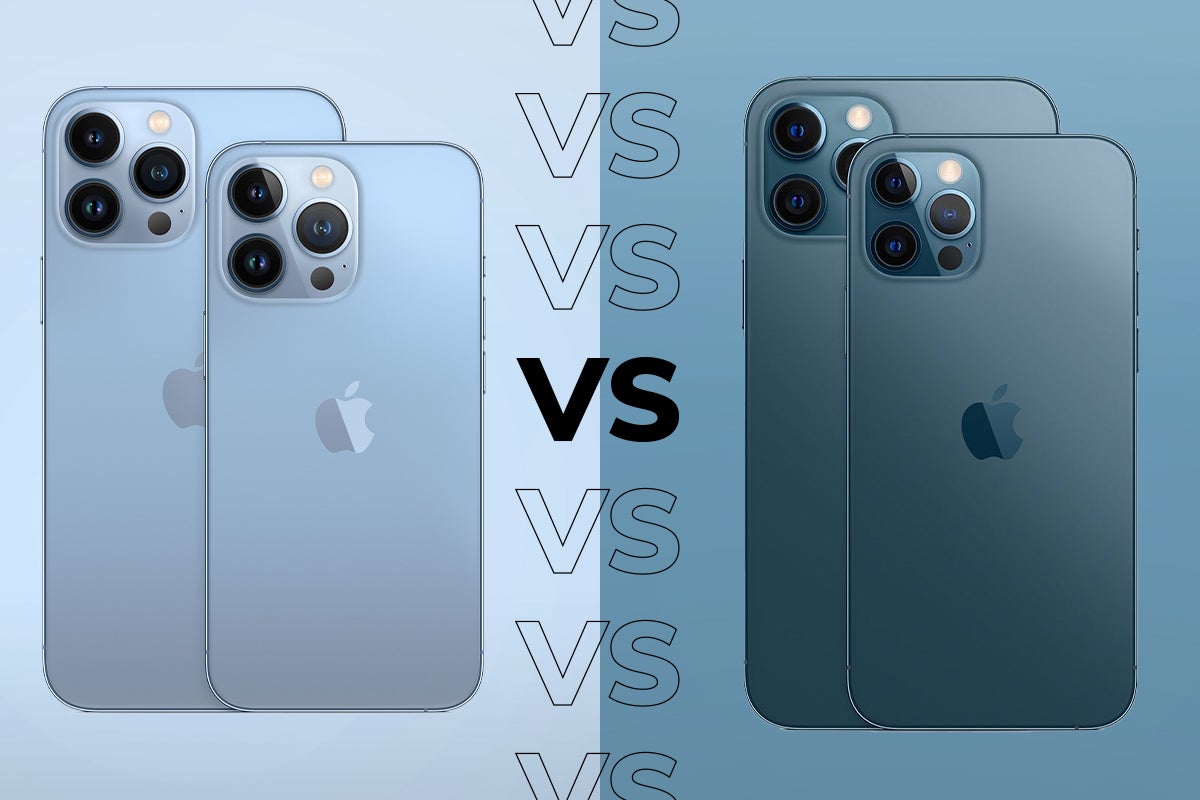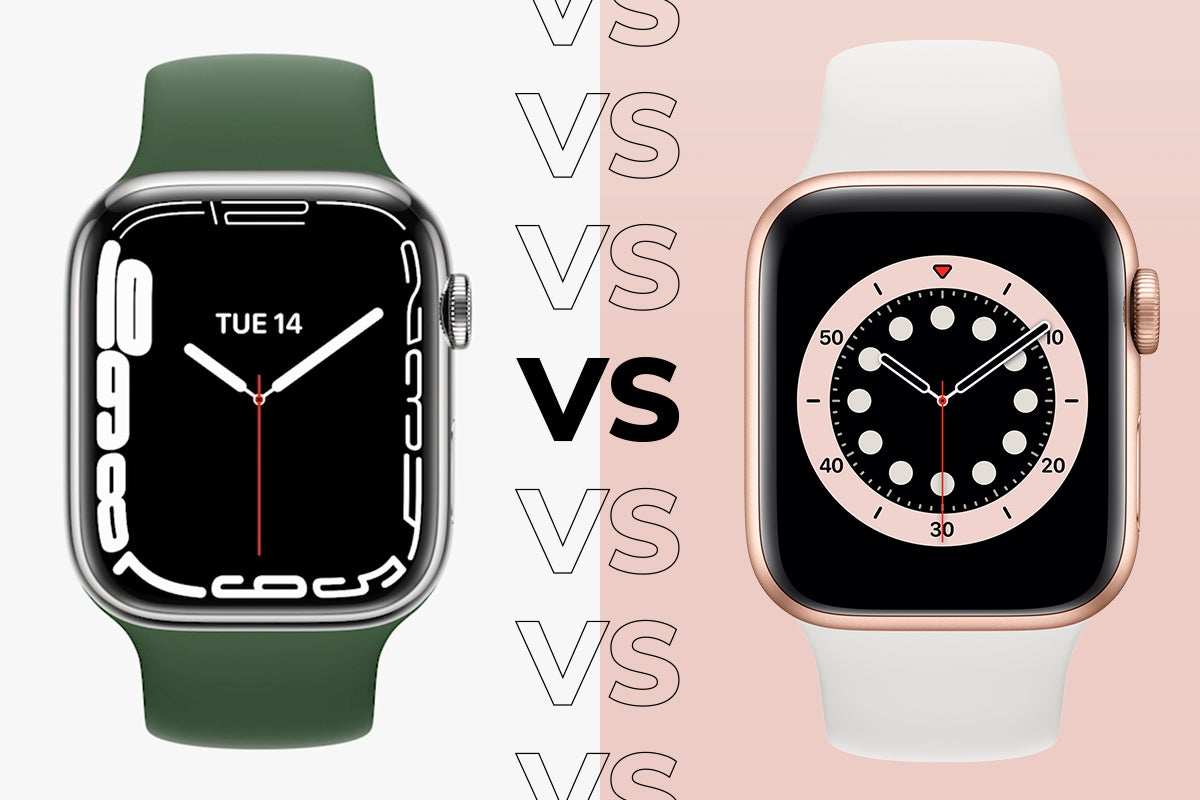Apple Watch 7 vs Samsung Galaxy Watch 4
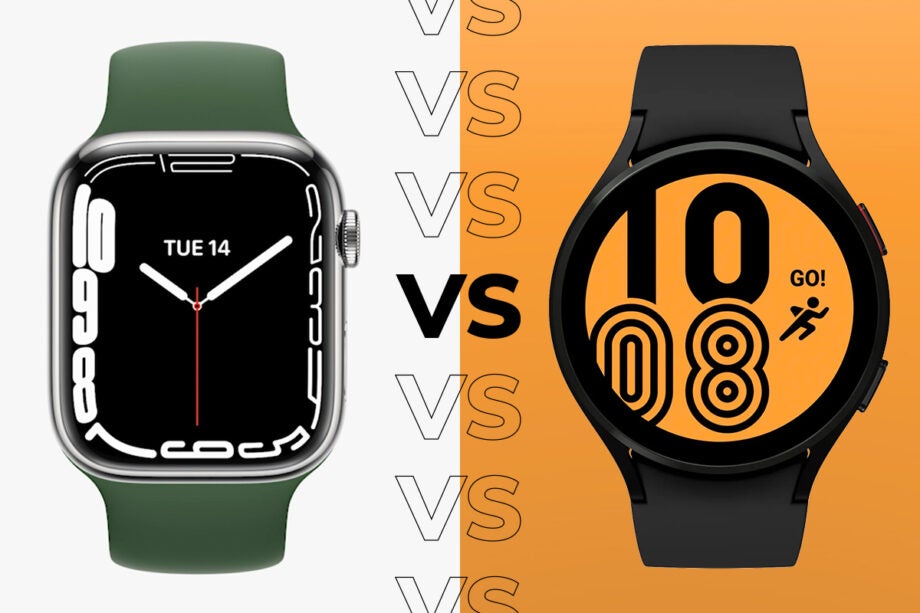
The next-gen Apple Watch is officially here, here’s how it compares to one of the Android alternatives, the Galaxy Watch 4.
We’ve been waiting a while, but the new Apple Watch 7 is finally here, and it’s not really what people thought it would be.
Meanwhile, the Galaxy Watch 4 came out a few weeks ago, so we’ve had the chance to test and review the smartwatch to gauge how it compares to its predecessors.
While we haven’t gotten our hands on the Apple Watch 7 yet, here are the main comparisons that can be made between the two smartwatches based on our expert knowledge and experience with past wearables.
Price
The Apple Watch 7 will retail for the same price as its predecessor, currently sitting at $399, though the UK pricing hasn’t been released yet.
The Galaxy Watch 4 cost £249 at launch, though you could likely find it for a little cheaper if you looked hard enough.
Battery
The Watch 7 doesn’t differ too much from the Apple Watch 6 in terms of battery; Apple is still quoting an 18-hour battery life. However, fast charging is now an option, with the company claiming that an 8-minute charge would allow for eight hours of sleep tracking.
The Galaxy Watch 4 meanwhile, is massively more powerful in terms of battery, with a 40-hour lifespan. In our tests, we managed to get 31 hours of use while making use of the workout-tracking, sleep tracking and pretty constant notifications.
It also doesn’t take forever to charge, with our unit going from 10% to 100% after just 33 minutes on charge.
Features and specs
The Apple Watch 7 still runs on watchOS and has the same processor as the Watch 6. The main draw this year was focused on durability, since the Watch 7 now has an official IP6X certification, making it better protected from dust particles.
It’s also keeping the WR50 water resistance, so you can still use it to track any water based activities you get up to.
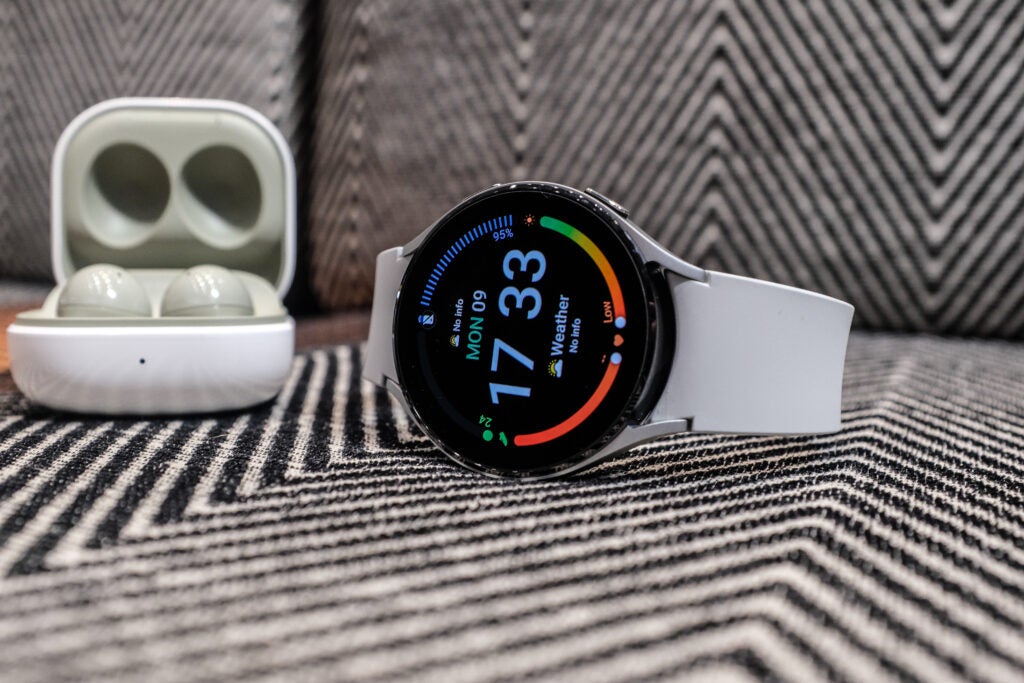
The Galaxy Watch 4 uses WearOS, so you get access to some of the most popular apps, like Google Maps and Google Pay. The watch is still smooth and fluid when in use, courtesy of the new 5nm Exynos W920 chipset.
However, you are still stuck with Bixby here, which doesn’t hold a candle compared to Apple’s Siri. There is also noticeable features missing, as there is no Spotify offline support as of right now, and the YouTube Music WearOS app is still in the pipeline, meaning that listening to music on the Watch 3 will be a little more of a challenge.
Design
The display of the Apple Watch 7 has changed slightly when compared to the older models. The display is now bigger, bumping up to 41mm and 45mm options, with 20% more screen available over the Series 6.
The display is also now 70% brighter when you’re indoors and when your wrist is down, making it a little easier to inconspicuously check your watch for the time.
The Watch 6 also features softer, rounded corners, with the screen using a 50% stronger material, that is made from crack-resistant crystal.
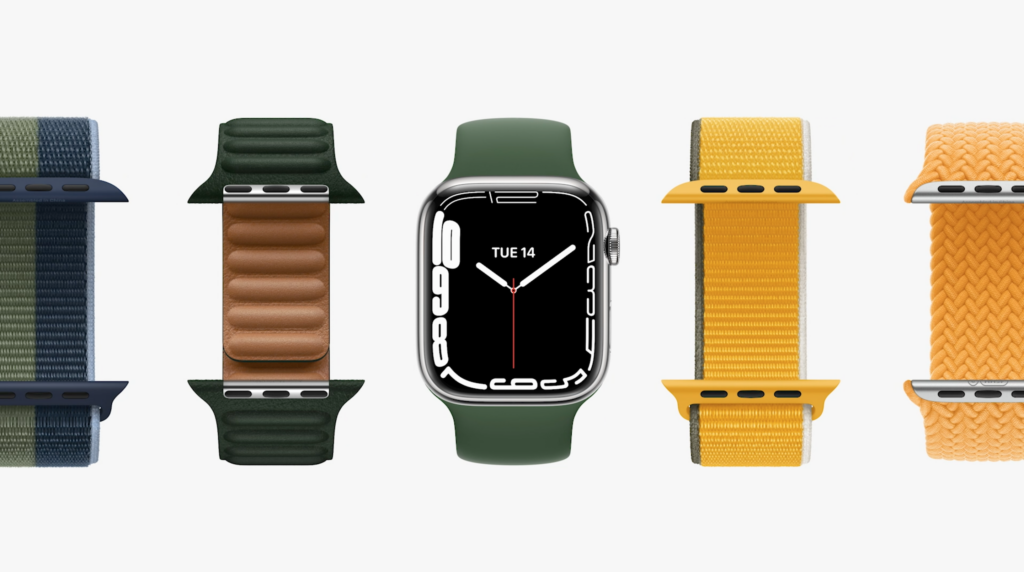
The Galaxy Watch 4, however, takes on a very different look from Apple, as its watch face is circular and looks more like a traditional watch. Its display lies completely flat with a Super AMOLED screen.
You can get a 40mm or 44mm version, with two small pushbuttons on the side of the watch, instead of Apple’s well-favoured Digital Crown. The Watch 4 is more reminiscent of a modern smartwatch, with its sleek and minimalist design, whereas Apple seems to favour a slightly more futuristic approach.
Fitness Tracking
The Apple Watch 7 was slightly disappointing in terms of its fitness upgrades, as the blood glucose monitor did not appear and is now pegged to appear next year.
The Watch 7 is still capable of doing everything the Watch 6 does, including measuring your blood oxygen levels, letting you do an ECG and tracking your workouts. From Apple’s trailers, it seems like you will be able to check other things, like the speed of your golf ball swing.
The Watch 7 has also made some upgrades to the cycling fitness option, as it will better recognise when you’ve started a bike workout, and will even know when if you ever fall off your bike, though we don’t recommend making a habit of that.
The Galaxy Watch 4, on the other hand, packs a BioActive sensor, which is able to collect data on your heart rate, blood pressure, blood oxygen levels and perform an ECG test. It can also conduct more complete analyses of your body, looking at your body fat, skeletal muscle, body water, BMI and BMR (basal metabolic rate).
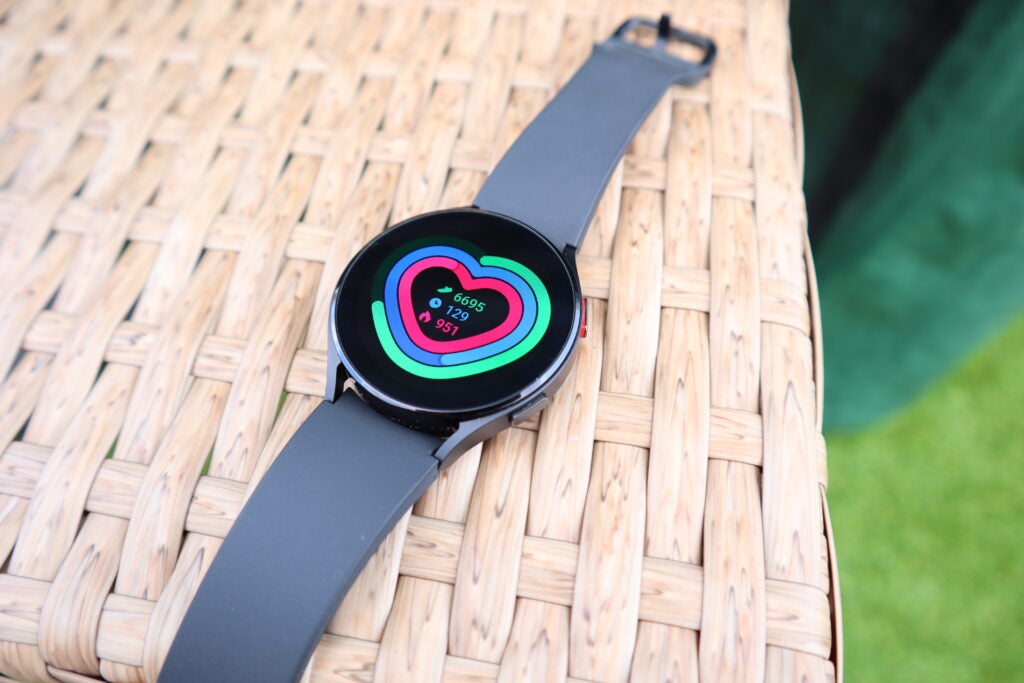
You can also run all your fitness data through Google Fit if you wanted to, but there is always the choice to stick with Samsung Health.
There is also GPS built-in, as it is with the Apple Watch 7, with Samsung’s version being able to establish a connection in just 5-10 seconds, as we discovered through our testing.
Early verdict
There is no doubt that the Apple Watch 7 will be another impressive addition to the companies smartwatch lineup, offering accurate GPS features and adding more aspects to the cycling part of the fitness app.
However, when it comes to price and the fleshed-out features of the latest Samsung smartwatch, the winner has to be the Galaxy Watch. While it makes sense for Apple owners to stick with the Apple ecosystem, any Android users would fare very well with the Watch 4, and it seems Samsung is finally closing in on Apple’s crown when it comes to wearables.



